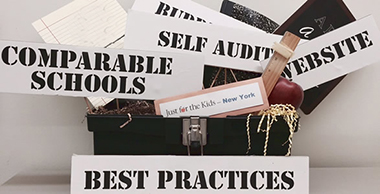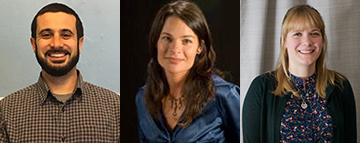Beating the Odds
 |
|
UAlbany NYKids researchers conducted in-depth qualitative case studies of 10 New York State high schools to produce its findings on the best practices of odds-beating high schools. |
ALBANY, N.Y. (Sept. 26, 2018) — Raising graduation rates for high school students who are African-American/Black, Hispanic/Latino, English-language-learners or economically disadvantaged is doable. Researchers from the School of Education’s NYKids project have the proof.
In a just released report, “Preparing Critical Needs Students for College or Career,” a team led by Kristen C. Wilcox, NYKids research team leader and associate professor of Educational Theory and Practice, draws conclusions from its in-depth qualitative case studies of 10 New York State high schools. Results are based on these schools’ graduation rates relative to other New York schools serving similar student populations.
What the team found were four key “promising practices” or themes that relate to seven of the schools being classified as “odds beating (OB):” having graduation rates among African-American/Black, Hispanic/Latino, English language learners or economically disadvantaged students that were beyond expectations. (The other three schools were “typically performing,” with rates as expected and used for comparison purposes.)
The odds-beaters shared these priorities and practices:
- Co-Constructing a Humanizing School Community by promoting the development of well-rounded youth through active relationship-building across all school levels
- Collaboratively Defining and Achieving Success by staff, students and parents collaborating to solve problems aimed at developing young adults ready for life after high school
- Cultivating Culturally-Responsive, Inclusive, and Facilitative Leadership by choosing staff who share a cultural and linguistic identity and feel a strong sense of community pride
- Customizing Innovative Programs and Practices by making genuine efforts to recognize and appreciate the diverse backgrounds and experiences of their student population and embedding them in the school culture and curriculum.
 |
|
NYKids director of research and development Kristen Wilcox, center, is flanked by post-doc fellow Aaron Leo, left, and doctoral candidate Catherine Kramer, right. |
“These four priorities and practices provide a partial blueprint for what educators in other high schools can prioritize and do to facilitate the success of the greatest number of students, particularly poverty-challenged and culturally-diverse ones,” wrote Wilcox in a NYKids summary.
The odds-beating high schools came from different-sized districts and varied in levels of diversity:
- Alfred-Almond Junior-Senior in Allegany County
- Crown Point Central in Essex County
- Freeport and Malverne high schools in Hempstead, Nassau County
- Maple Grove Junior/Senior in Chautauqua County
- Port Chester in southern Westchester
- Sherburne-Earlville in Chenango
Aaron Leo, a post-doctoral student who, along with doctoral student Catherine Kramer, worked on the study, noted that, while no school provides a “perfect template” for success, “the odds-beaters did apply these themes more consistently or perhaps in a different way than the 'typically performing' schools.
“Certainly, the bilingual program and hiring of Spanish-speaking staff of Port Chester would be inappropriate in one of the other schools like Sherburne-Earlville. But we purposefully define the themes broadly and see that each OB school is attending to the specific needs of its population — whether it be a rural, agricultural community struggling with poverty or a school with a high proportion of migrants from Latin America.
“So in that sense, we do still see the themes applying in a broad sense, though they will look different depending on the context.”
![]() For more news, subscribe to UAlbany's RSS headline feeds
For more news, subscribe to UAlbany's RSS headline feeds
A comprehensive public research university, the University at Albany-SUNY offers more than 120 undergraduate majors and minors and 125 master's, doctoral and graduate certificate programs. UAlbany is a leader among all New York State colleges and universities in such diverse fields as atmospheric and environmental sciences, business, education, public health,health sciences, criminal justice, emergency preparedness, engineering and applied sciences, informatics, public administration, social welfare and sociology, taught by an extensive roster of faculty experts. It also offers expanded academic and research opportunities for students through an affiliation with Albany Law School. With a curriculum enhanced by 600 study-abroad opportunities, UAlbany launches great careers.


